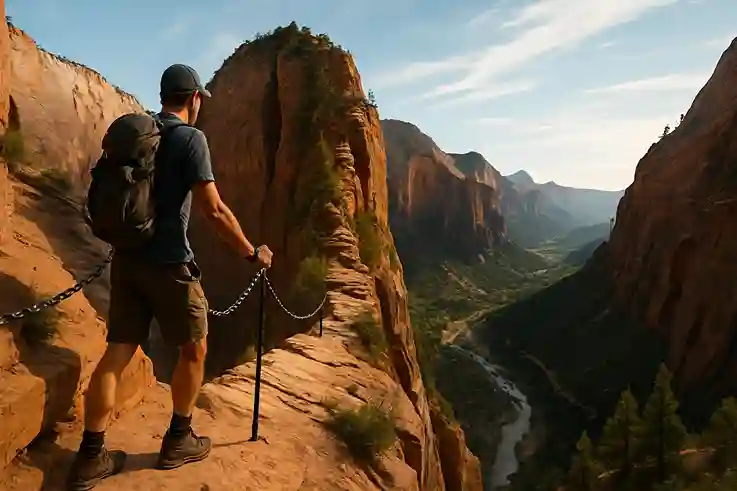Best Time to Travel to Hawaii depends on more than just picking vacation days. Timing shapes how calm your trip feels. Weather, prices, and crowd levels all affect your ability to fully relax. A sunny morning feels different when beaches stay quiet. A flight feels better when it costs less.
In this guide, you’ll see which seasons bring the best balance of sunshine, lower costs, and fewer people. You’ll also learn what times to avoid if you want peace instead of stress. By the end, you’ll know exactly when to plan for ultimate relaxation in Hawaii.
“In Hawaii, relaxation isn’t planned—it simply finds you.”
Why Timing Your Hawaii Trip Matters
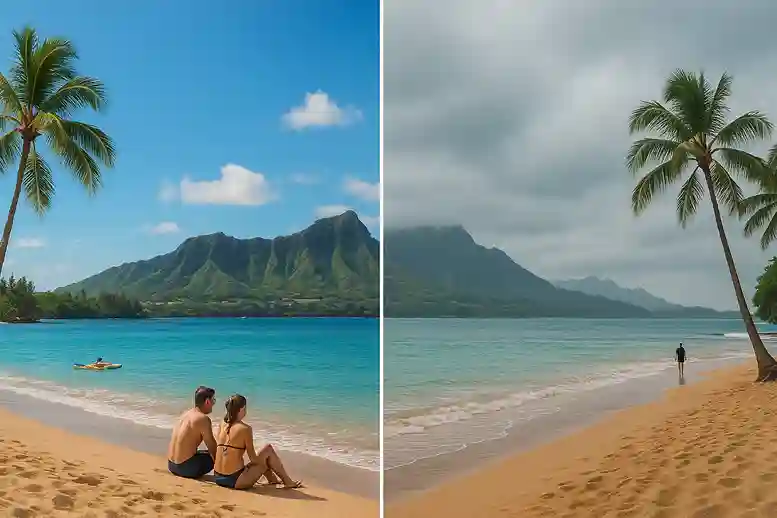
The timing of your Hawaii trip plays a major role in how relaxing it feels. Stress fades quickly when you arrive at the right season. Planning well means fewer hassles with weather, prices, and crowded spaces. Each of these factors can either add tension or remove it.
Weather is often the first factor travelers consider. Hawaii offers warm temperatures year-round, but not every month feels the same. Heavy rain can limit outdoor activities. Strong winds can make beaches less comfortable. By choosing the right months, you create space for calmer, sunnier days that support true relaxation.
Crowds also shape the experience. Peak seasons bring larger groups of visitors, long lines, and packed beaches. Even dining reservations can become stressful. Traveling during quieter months ensures more personal space and a smoother rhythm. A calm environment makes it easier to unwind.
Costs also tie directly to relaxation. When flights and hotels are more affordable, the entire trip feels lighter. Stress from overspending can follow you into vacation. Instead, well-timed travel allows you to enjoy comfort without financial strain.
When you connect timing with stress-free planning, every moment feels smoother. Weather, crowds, and prices align to support ultimate peace. This balance creates the perfect setting for enjoying Hawaii in the most restful way possible.
Best Time to Travel to Hawaii for Sunny Relaxation
When relaxation is your goal, weather and crowd levels matter most. Hawaii offers sunshine all year, but certain months stand out. Spring and fall bring the right mix of warmth, light breezes, and calmer beaches.
Spring Brings Mild Sunshine
From April to June, Hawaii feels balanced. The weather is warm but not uncomfortably hot. Beaches stay less crowded compared to summer. This season also offers longer days with plenty of light. You can enjoy a quiet swim in the morning or a slow walk at sunset. Spring creates space for calm while still delivering sunny skies.
Fall Offers Gentle Peace
From September to November, Hawaii shifts again. Temperatures remain pleasant, but heavy tourist numbers drop. With fewer visitors, resorts feel less busy. You can enjoy peaceful meals, relaxed beach time, and open hiking trails. The pace slows down, making it easier to rest and reset.
Balance Between Warmth and Calm
Both seasons bring the best balance between comfort and quiet. You avoid the extremes of winter rains and summer crowds. Every part of the trip feels smoother when the timing matches your need for rest. For many travelers, these two windows mark the best time to travel to Hawaii for sunny relaxation.
Best Time to Travel to Hawaii for Sunny Relaxation
| Season | Weather | Crowds | Activities | Relaxation Benefit |
|---|---|---|---|---|
| Spring (April–June) | Warm, mild sunshine, low humidity | Fewer tourists than summer | Beach days, snorkeling, outdoor festivals | Balanced warmth with space to unwind |
| Fall (September–November) | Pleasant temperatures, gentle breezes | Noticeably smaller crowds | Hiking, cultural events, quiet beach time | Peaceful pace with affordable stays |
Best Time to Travel to Hawaii for Budget-Friendly
Relaxation in Hawaii is not just about sunshine. It also connects to how much you spend. Travel costs can weigh on your mind, even when the beaches feel perfect. That is why choosing the right season matters for both peace and budget.
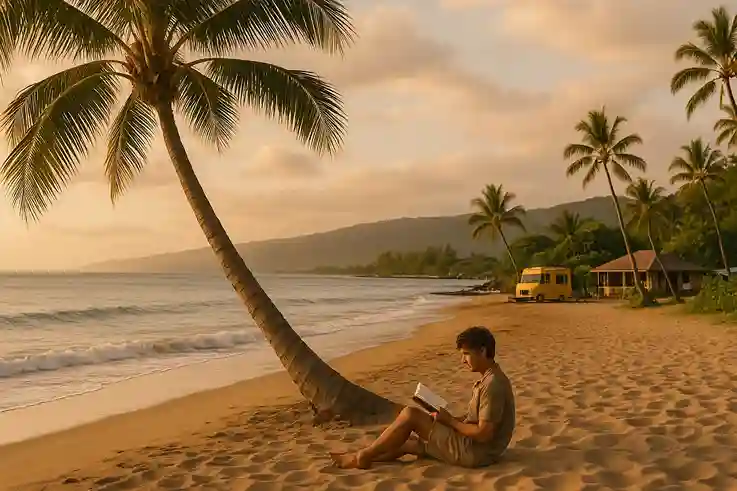
Savings Ease Stress
When you visit during off-season months, hotels and flights drop in price. Lower costs make the trip feel lighter. You can focus on calm mornings and gentle evenings instead of checking your credit card balance. Affordable choices create a smoother start to any vacation.
Winter Offers Cheaper Travel
January and February often bring some of the lowest prices. Fewer visitors book during these months after the holiday rush ends. Flights are easier to find, and resorts have more space. While you may face cooler evenings, the trade-off is worth it for travelers seeking peace with lower expenses.
Late Fall Adds Value
Another strong budget window is late fall. By mid-November, tourist numbers fall again. Resorts reduce rates, and airlines compete for bookings. The weather still feels mild, and the islands remain inviting. Travelers who choose this time enjoy both savings and calm surroundings.
Balance of Cost and Comfort
By timing your trip during these off-peak months, you create room for true relaxation. Money saved can be used for extra activities, spa treatments, or longer stays. For many visitors, this balance makes the best time to travel to Hawaii not just about weather but about peace of mind through budget-friendly calm.
Best Time to Travel to Hawaii for Nature and Quiet
Hawaii offers more than beaches and sunshine. Its natural beauty creates moments of calm that feel unforgettable. The right season can help you enjoy these wonders without heavy crowds.
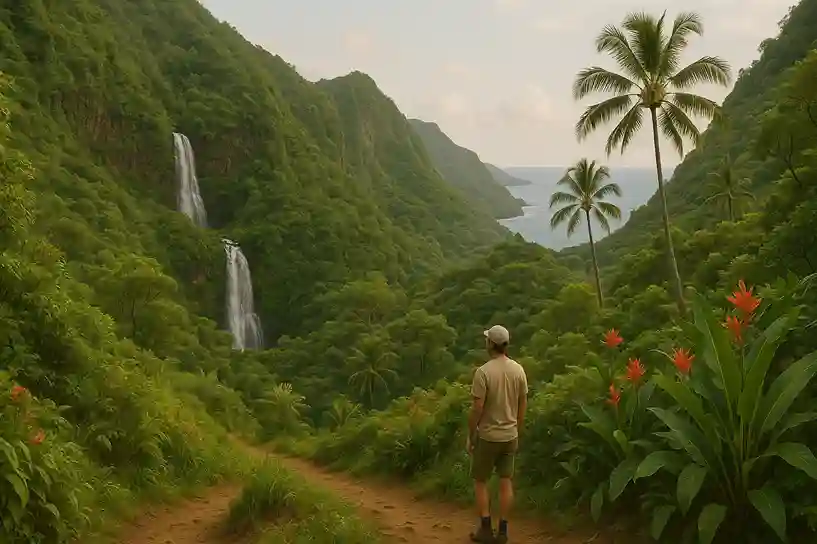
Winter Brings Whale Watching
From December to March, migrating humpback whales arrive near the islands. Watching these gentle giants rise from the ocean creates quiet awe. The experience feels both exciting and soothing. Fewer beach activities take place in winter, but the reward is clear. Whale watching connects you with nature in a way that strengthens relaxation.
Summer Mornings for Peaceful Hikes
During summer, trails open with clear skies and bright mornings. Hiking early in the day means cooler air and fewer people. The calm of a forest path or mountain ridge adds balance to any trip. By the afternoon, beaches may fill, but mornings belong to hikers seeking quiet.
Nature Restores Calm
Both seasons highlight how Hawaii’s landscapes support rest. Winter seas bring ocean life closer. Summer skies reveal trails and waterfalls at their best. Each natural encounter reduces stress and builds peace. For many travelers, these experiences mark the best time to travel to Hawaii for nature and quiet.
You can also explore Hawaii’s official government portal for helpful tourism and state information.
Worst Times to Visit if You Crave Peace
Not every season in Hawaii brings calm. Some periods draw heavy crowds, high costs, and more stress than relaxation. If peace is your priority, these are the times to avoid.
Holiday Crowds
Christmas and New Year remain the busiest weeks of the year. Families and vacationers flock to the islands during winter break. Beaches fill quickly, and popular resorts often sell out months ahead. Airfares rise sharply, and lines for attractions grow long. Instead of calm mornings, you may find crowded lobbies and packed trails.
Summer Rush
From June through August, Hawaii experiences another surge. School vacations bring families, while long days encourage more travel. Prices rise, and beaches feel busier. Even dining reservations become difficult to secure. For travelers seeking quiet, this season feels overwhelming.
Why to Avoid Peak Seasons
Crowds add stress to even simple activities. Waiting for meals, sitting in traffic, or sharing crowded beaches reduces your ability to rest. Higher costs also add financial tension. For ultimate calm, plan your trip outside these peak windows. Doing so ensures more space, more peace, and a smoother journey.
For many visitors, the best time to travel to Hawaii is any season that avoids these peak holidays. By skipping them, you trade chaos for calm and guarantee a more restorative escape.
Tips for Planning a Relaxing Hawaii Escape
Relaxation in Hawaii does not happen by chance. Simple planning choices can protect your calm and shape your trip. When you focus on timing, location, and balance, every moment feels easier.
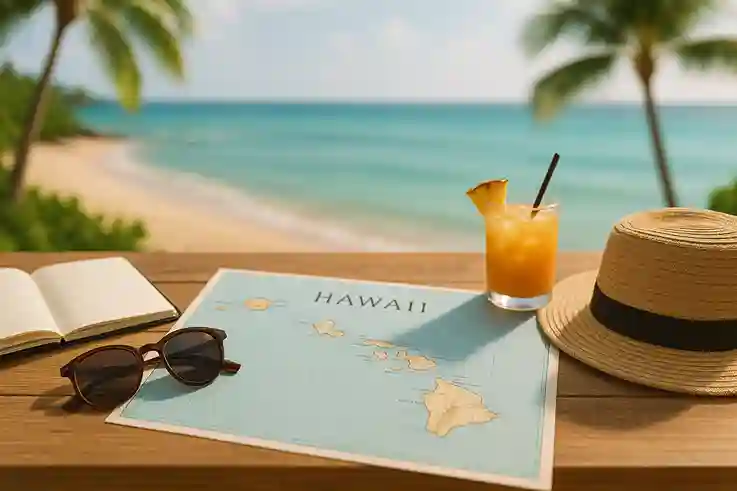
Book Early for Peace of Mind
Flights and resorts sell quickly, especially during popular seasons. Therefore, booking several months ahead secures better choices and prevents last-minute stress. With early planning, you gain access to better flight times, hotel options, and even rental car deals. This flexibility lets you build a trip that feels calm from the very start.
Knowing everything is confirmed also brings peace before you even leave home. Instead of worrying about rising prices or limited availability, you can focus on the excitement of your upcoming journey. In addition, early reservations often come with lower rates or special discounts. These savings create more room in your budget for dining, excursions, or spa treatments.
By planning ahead, you not only protect your wallet but also protect your peace of mind. This simple step sets the tone for a smoother, more relaxing Hawaii vacation.
Choose Quiet Islands
Not every Hawaiian island feels the same, and that difference shapes your experience. Oahu and Maui attract the most visitors with busy resorts, popular beaches, and crowded attractions. These islands offer excitement but often lack the slower pace that supports deep relaxation.
In contrast, Lanai and Kauai provide a calmer atmosphere. Their smaller towns and lighter tourist flow create more open space and quieter surroundings. Therefore, you can enjoy peaceful beaches, unhurried meals, and easier access to natural beauty without constant noise or pressure.
Choosing one of these quieter islands changes the rhythm of your trip. The setting itself encourages slower mornings, calm evenings, and stress-free exploration. For travelers seeking the best time to travel to Hawaii for ultimate peace, Lanai or Kauai often deliver the perfect backdrop.
Balance Activities with Downtime
Not every Hawaiian island feels the same, and that difference directly shapes your trip. Oahu and Maui attract larger crowds with busy beaches, lively resorts, and popular attractions. These islands are exciting; however, they often lack the slower pace that supports deep relaxation.
In contrast, Lanai and Kauai create a calmer rhythm. Their smaller towns, fewer visitors, and quieter landscapes invite a different kind of experience. Therefore, you can enjoy open beaches, unhurried meals, and peaceful walks in nature without constant interruption.
In addition, these islands make planning easier since reservations and activities are less competitive. As a result, your days feel more flexible and less pressured. Even simple routines like dining or exploring trails become smoother and more enjoyable.
Choosing a quieter island changes the entire flow of your trip. It encourages slower mornings, restful evenings, and stress-free exploration. For travelers seeking the best time to travel to Hawaii for peace, Lanai and Kauai often provide the most relaxing setting.
Create Space for Calm
These simple choices—early booking, quiet islands, and balanced planning—truly make the difference in your Hawaii trip. First, when you book early, you remove stress and secure better options. Next, by choosing a quieter island, you allow yourself to enjoy open spaces and slower rhythms. Finally, balanced planning ensures your energy stays steady without overwhelming your schedule.
As a result, you move through each day at a gentle pace instead of rushing. In addition, you give yourself more time to rest, reflect, and enjoy the natural beauty around you. That slower pace is exactly what turns an ordinary vacation into a deeply relaxing escape.
For many travelers, these steps transform the best time to travel to Hawaii into more than just good timing. Instead, they create the best overall experience of the year—one filled with calm, balance, and unforgettable peace.
Best Time to Travel to Hawaii – Quick Guide
| Season / Time | Weather & Nature Highlights | Crowds & Costs | Best For |
|---|---|---|---|
| Spring (April–June) | Warm, mild sunshine, low humidity | Fewer tourists than summer | Sunny relaxation, snorkeling, outdoor festivals |
| Fall (September–November) | Pleasant temps, gentle breezes | Noticeably smaller crowds | Hiking, cultural events, peaceful beach time |
| Winter (Jan–Feb) | Cooler evenings, occasional rain | Lower hotel and flight costs | Budget-friendly calm, lighter crowds |
| Late Fall (Mid-November) | Mild weather, comfortable breezes | Reduced rates, fewer visitors | Affordable stays, stress-free relaxation |
| Winter (Dec–Mar) | Whale watching season, ocean life visible | Moderate crowds except holidays | Nature encounters, peaceful viewing |
| Summer (June–Aug) | Hot, long days, clear skies for hiking | High family travel, crowded spots | Morning hikes, nature exploration (less quiet) |
| Peak Holidays (Dec & New Year) | Festive season, busy events | Highest prices, packed resorts | Not ideal for peace or relaxation |
FAQ: Best Time to Travel to Hawaii
Conclusion
The best time to travel to Hawaii depends on what you value most. Some travelers look for sunny skies and open beaches. Others focus on lower costs, peaceful hikes, or special nature experiences. Each season offers its own rewards, but timing makes the difference between stress and calm.
Spring and fall bring mild weather with fewer crowds. Winter delivers whale watching and budget savings outside the holidays. Summer offers bright days and long hikes, though mornings feel calmer than afternoons. Every choice shapes how restful your trip becomes.
For ultimate relaxation, most travelers agree that off-season travel works best. Quieter beaches, lighter costs, and balanced weather all add to a smooth vacation. By planning around peak holidays, you create space for a slower rhythm and deeper peace.
Hawaii always offers beauty, but visiting at the right moment makes it unforgettable. The best time to travel to Hawaii is the time that matches your needs and restores your energy. With thoughtful planning, your journey becomes more than a trip—it becomes a true escape.
Which season do you think offers the most relaxing Hawaii experience? Share your thoughts and favorite time to visit in the comments.

Nick William is a dedicated travel blogger with a passion for uncovering hidden destinations and sharing authentic experiences from around the world. With a background in digital media and storytelling, he has developed a unique style that combines detailed research, vivid descriptions, and personal insights. His goal is to help readers not only plan their journeys but also connect with the culture, people, and stories behind each place.
When Nick isn’t exploring new cities or trekking off-the-beaten paths, he enjoys capturing moments through photography, reading history books, and sipping coffee while drafting his next adventure. His writing brings destinations to life, making every reader feel like a fellow traveler on the journey.


